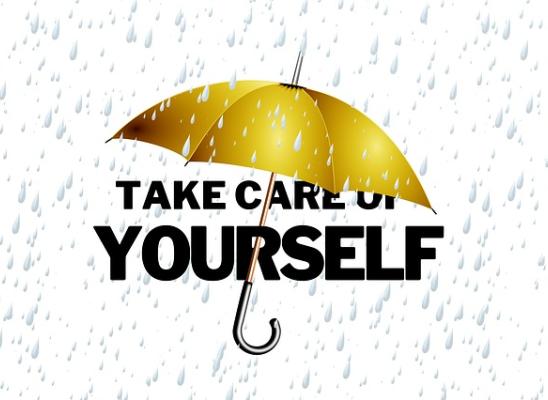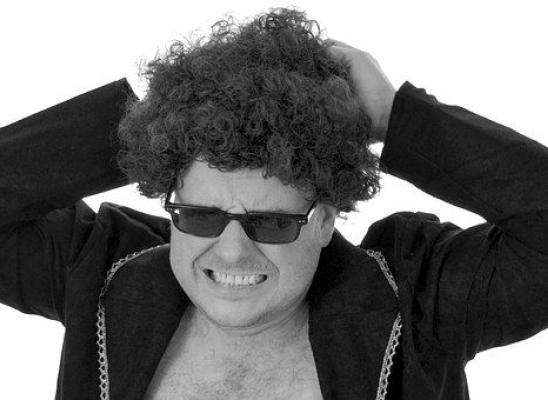Trichotillomania and Emotional Regulation Difficulties in Children
Online test
Find out the severity of your symptoms with this free online test
Emotional regulation is a very important human skill. It is a complex process where initiation, inhibition and modulation of a person’s state or behavior in a certain situation are involved. In simpler words, our thoughts, feelings, heart rate and bodily actions are controlled by our emotions. At times we may act or say things we regret later. Techniques like meditation and yoga enable us to improve our mood and increase our compassion.
Emotional Regulation Problems
 Kennneth Barish Ph.D. is a Clinical Associate Professor of Psychology at Weill Medical College, Cornell University and author of “Pride and Joy: A Guide to Understanding Your Child’s Emotions and Solving Family Problems.” He says people ask him why their child keeps on acting in a certain way i.e. hitting his siblings, refuses to do his work and/or lie, knowing that he will be punished for his behavior. The answer to this question is,
Kennneth Barish Ph.D. is a Clinical Associate Professor of Psychology at Weill Medical College, Cornell University and author of “Pride and Joy: A Guide to Understanding Your Child’s Emotions and Solving Family Problems.” He says people ask him why their child keeps on acting in a certain way i.e. hitting his siblings, refuses to do his work and/or lie, knowing that he will be punished for his behavior. The answer to this question is,
“He behaves this way because he is caught up in the emotion of the moment.”
Do I Have Trichotillomania?Check the severity of your hair pulling symptoms with this free online test
In the field of child psychological health a very important aspect that has become quite popular is the child’s own ability to regulate his emotions. A child needs to express his feelings in a constructive manner. When a child is able to regulate his emotions, he can benefit from it in all fields of life. Such children are able to concentrate on their work and achieve good results. Resolving a conflict is easier for them and they experience less stress and anxiety when faced with a difficult situation. These children are well-behaved and are more sensitive towards other people’s feelings.
To manage separation, new environment or situation, small children learn to sooth themselves on their own. For example, sucking their thumbs, rocking, head-banging or nail biting, are some of the self-soothing habits children learn at a small age. Hair pulling and skin picking are learnt at a young age also. These habits are used in distressful situations and need immediate attention so that they do not interfere with the child’s everyday life. The problem is when parents start nagging as it is their own way of dealing with their feelings when they find their child distressed. Hence the parent needs to be careful in expressing his empathy. Sometimes the parent blames himself for the child’s behavior. However, if the behavior is causing harm e.g. hair pulling has become more than just a bad habit, professional help must be sought.
The Alert Program
The Alert Program has become quite a popular phenomenon amongst teachers, therapists and parents. The program offers well-defined self-regulation awareness guidelines. How Does Your Engine Run?® A Leader's Guide to the Alert Program® for Self-Regulation (Williams & Shellenberger, 1996), uses a unique approach to help children along with parents, teachers and therapist to find the right mix of strategies to reach the optimum level of alertness. For example, the student is able to know what he needs to do before learning a test in order to become alert at the most optimum level. A parent can use this program to find out how to calm and sooth the child and prepare him for bedtime.
The program is one of a kind that teaches children self-awareness and self-regulation so that he can understand his body’s energy level. In this way that energy can be regulated to reach its optimum level. The program is suitable for all ages starting from pre-school to older children as it can be altered to meet the needs of different age groups. A child experiences different levels of alertness during the day. Some are very active and can easily be distracted. The child is taught each alert level and its meaning. Once he learns that he can recognize what alert level his body is at a specific time during the day, he is then taught different ways to manage the most optimum level. The program includes visual and motor activities allowing the child to self-regulate himself in the form of fun activities. For instance, the following visual clip can be used to help him find out what alert level he is experiencing at a given time:

Jill S. Feldman, OTR/L, C/SIPT, says,
“In my experience, these pre-adolescents know that they feel anxious when they are anxious. They understand the difference when they are not anxious, but do not have the ability to feel the "in between" stages. Some children know their triggers, but most do not.”
Jill suggests using the Alert Program by Williams and Shellenberger and The Incredible 5-Point Scale by Buron and Curtis as she considers both programs very useful in finding out ways to sooth children and what triggers changes during times of arousal.
Hair Pulling Amongst Children
 Traditionally methods like Habit Reversal Training (HRT) have been used to treat disorders like hair pulling. Today more modern methods are used that are long lasting and effective. Dr. Charles Manseto introduced the Comprehensive Behavioral Model to treat hair pulling. Emotional regulation is being applied to address the disorder i.e. find better and constructive ways of handling stress and boredom. Dr. Nancy Keuthen along with her colleagues uses the Dialectical Behavior Therapy to reduce hair pulling urges. It helps the patient find new ways of regulating his emotions. Many researchers have found that behavior therapy combined with emotional regulation and acceptance result in much greater relief from hair pulling as compared to using one method alone. Children as old as 7 years can benefit from this treatment.
Traditionally methods like Habit Reversal Training (HRT) have been used to treat disorders like hair pulling. Today more modern methods are used that are long lasting and effective. Dr. Charles Manseto introduced the Comprehensive Behavioral Model to treat hair pulling. Emotional regulation is being applied to address the disorder i.e. find better and constructive ways of handling stress and boredom. Dr. Nancy Keuthen along with her colleagues uses the Dialectical Behavior Therapy to reduce hair pulling urges. It helps the patient find new ways of regulating his emotions. Many researchers have found that behavior therapy combined with emotional regulation and acceptance result in much greater relief from hair pulling as compared to using one method alone. Children as old as 7 years can benefit from this treatment.
Hence no matter what issue your child is going through i.e. physical or mental health issues, emotional regulation can help him cope with stress, tension, anger and/or boredom. Children learn to sooth themselves at a very young age. Some ways of soothing may be harmless but others can be quite harmful such as hair pulling. Parents must keep an eye on their child’s behavior especially when he is in distress and identify signs of abnormal responses. These must be reported to an expert especially if it is causing harm or acting as an obstacle in his everyday life. For example, if the child cannot perform well at school the way he used to, the parent needs to discuss the problem with the teacher. If the teacher also feels that he is distracted most of the times, expert help must be taken immediately as distress and depression can have serious consequences and can proceed into the child’s adulthood if not treated on time.
Sources:
Cole, P. M., Michel, M. K., & Teti, L. O. (1994). The development of emotion regulation and dysregulation: A clinical perspective. (Vol. 59, pp. 73-100). Wiley-Blackwell.
http://alimattu.com/blog/2010/10/7/a-beginners-guide-to-treating-trichotillomania-separating-sc.html
http://www.huffingtonpost.com/kenneth-barish-phd/how-do-children-learn-to-_b_3890461.html
https://www.psychologytoday.com/basics/emotion-regulation
http://www.nurseryworld.co.uk/nursery-world/news/1099752/behaviour-self-soothing
Online test
Find out the severity of your symptoms with this free online test
Start your journey with TrichStop
Take control of your life and find freedom from hair pulling through professional therapy and evidence-based behavioral techniques.
Start Now



